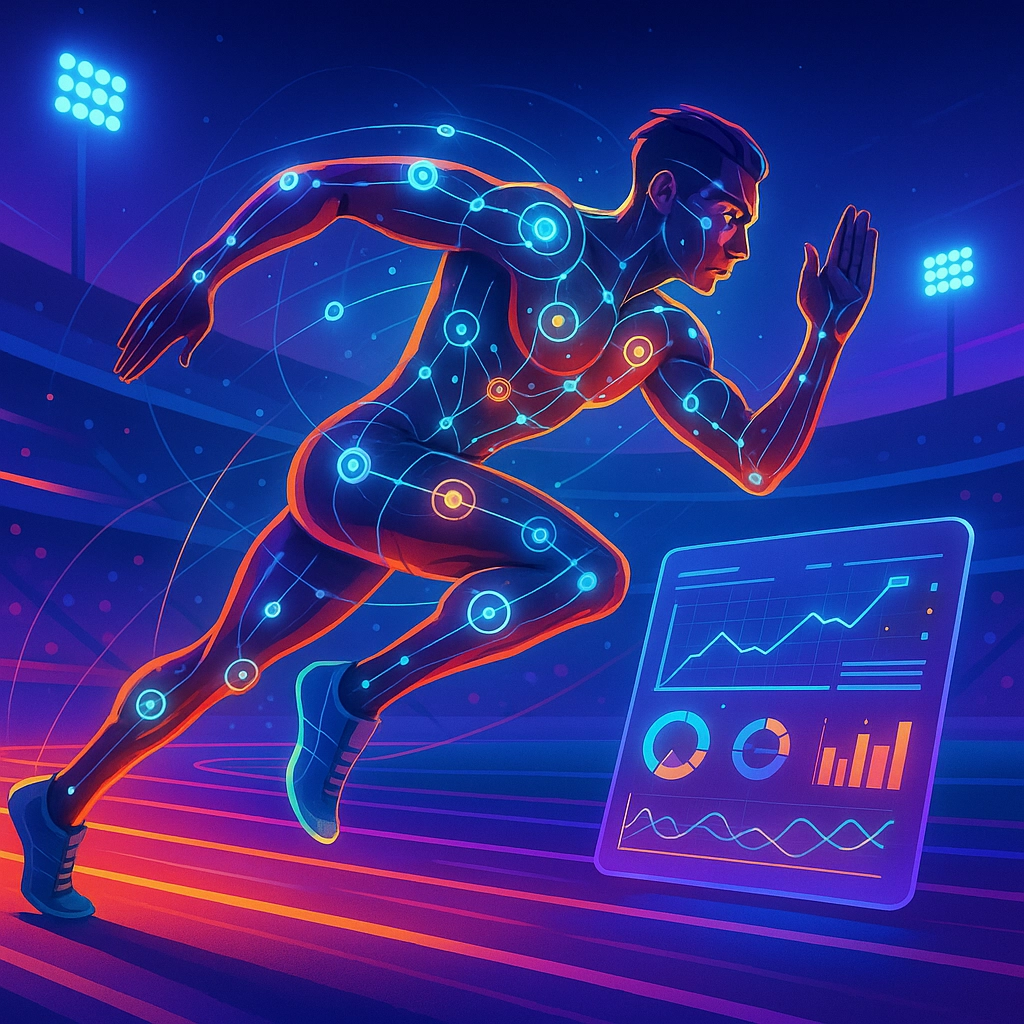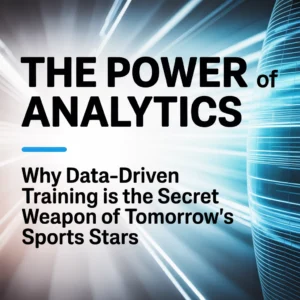Behind the Scenes: The Data-Driven Revolution Powering the Next Generation of Sports Icons

Fall interactions and outputs need
The modern sports landscape is undergoing a profound transformation that extends far beyond what spectators see on game day. At the heart of this revolution lies an intricate web of data analytics, artificial intelligence, and cloud computing technologies that are fundamentally reshaping how athletes train, teams strategize, and fans engage with their favorite sports. This data-driven metamorphosis represents the most significant shift in sports since the introduction of television broadcasting, creating a new paradigm where every heartbeat, sprint, and strategic decision is measured, analyzed, and optimized.
The Explosive Growth of Sports Analytics
The sports analytics industry is experiencing unprecedented expansion, with market projections revealing the scale of this transformation. The global sports analytics market is projected to grow from USD 5.79 billion in 2025 to USD 24.03 billion by 2032, exhibiting a compound annual growth rate of 22.5%. This remarkable growth trajectory reflects not just investment in technology, but a fundamental recognition that data has become the new competitive advantage in professional sports.
The adoption rate among professional teams underscores this shift's immediacy. Over 75% of professional sports teams now use real-time analytics during games to gain a competitive advantage, marking a complete departure from the intuition-based approaches that dominated sports for centuries. This widespread adoption has been particularly pronounced in North America, where the increasing use of wearable electronic devices and GPS sensor tracking systems has created an ecosystem where every movement, biometric reading, and in-game event is captured and analyzed.
Performance Optimization Through Advanced Analytics
The transformation of raw athletic performance into actionable insights represents one of the most significant applications of this data revolution. Machine learning and artificial intelligence applications are converting vast amounts of performance data into nuanced understanding that was previously impossible to achieve. Teams can now analyze athlete performance data with unprecedented sophistication, moving beyond traditional statistics to understand the subtle patterns that separate good performance from greatness.
Biometric Monitoring and Injury Prevention
Modern sports analytics has evolved to predict not just performance outcomes, but also potential injuries before they occur. Advanced algorithms can now predict ligament fatigue and track athletes with precision that extends to monitoring every physiological indicator during training and competition. This capability represents a paradigm shift from reactive injury treatment to proactive injury prevention, potentially extending careers and optimizing long-term athlete development.

Real-Time Strategic Adjustments
The integration of real-time data processing allows coaches and athletes to make strategic adjustments during competition based on live performance metrics. Cloud computing enables the analysis of vast amounts of data quickly and accurately, providing deeper insights into player performance and team strategies that can be implemented immediately. This real-time capability transforms coaching from a primarily experiential discipline into a data-informed science.
Fan Engagement and Personalized Experiences
The data revolution extends far beyond athlete performance, fundamentally changing how sports organizations connect with their audiences. Cloud technology enables sports organizations to handle large volumes of fan data and conduct sophisticated analysis to create targeted marketing campaigns that reach specific audiences with precisely tailored messages.
Personalized Content Delivery
Technologies like machine learning-based recommendations are helping sports organizations deliver tailored content and match footage recommendations to fans, enhancing viewing experiences and increasing engagement levels. This personalization extends to creating content that responds instantly to events both on and off the field, allowing organizations to distribute relevant material quickly across digital platforms.
Strategic Asset Optimization
The ability to analyze fan behavior patterns enables sports organizations to optimize their commercial operations in ways previously impossible. Teams can now tailor marketing campaigns with laser precision, predict fan behaviors to evolve direct-to-consumer experiences, and optimize sponsorship assets in real time. These capabilities transform fan engagement from broad-based marketing to highly targeted, individualized experiences.

Real-World Applications Transforming Professional Sports
Several high-profile implementations demonstrate the practical impact of this data-driven transformation across different sports contexts.
NFL’s Next Gen Stats Revolution
The National Football League's partnership with leading tech providers exemplifies how cloud computing is revolutionizing sports analytics. The NFL uses advanced data analysis to generate real-time Next Gen Stats during games, applying machine learning to training and stadium data to create actionable insights that enhance both fan understanding and team strategy. The Pressure Probability stat, which captures quarterback pressure dynamics, offers fans deeper game understanding while providing teams with tactical intelligence.
European Football’s Analytics Adoption
The transformation is equally pronounced in European football, where clubs from Lisbon to Munich have discovered that numbers provide more reliable insights than traditional scouting methods. The shift began in the early 2000s when affordable tracking tools allowed sports scientists to capture every sprint, pass, and heartbeat during matches. Team selection has evolved from personal preference to algorithmic identification of peak form and hidden fatigue patterns.
The Technological Infrastructure Powering Change
The foundation of this sports analytics revolution rests on sophisticated technological infrastructure that combines cloud computing, artificial intelligence, and advanced sensor technology.
Cloud Computing as the Backbone
Cloud technology serves as the essential infrastructure enabling real-time data processing and analysis at the scale required for modern sports analytics. This infrastructure supports everything from instant content creation and distribution to complex machine learning models that can process multiple data streams simultaneously during live competition.
Sensor Technology and Data Collection
The Paris 2024 Olympics showcased the cutting edge of sports sensor technology, where athletes wore advanced sensors capable of tracking movement with extraordinary precision. These sensors, described as more sophisticated than consumer smart devices, enabled real-time analysis that could generate highlight reels instantly, even before athletes finished their events.

Future Trends and Emerging Technologies
The trajectory of sports analytics points toward even more transformative changes in the coming years, with several emerging trends poised to further revolutionize the industry.
AI-Powered Strategic Development
Future developments will see machine learning models becoming integral to strategic planning, moving beyond simple statistical analysis to predictive modeling that can anticipate opponent strategies and optimize game plans in real time. This evolution will transform coaching from reactive decision-making to proactive strategic development.
Holographic Analysis and Visualization
Emerging technologies promise to introduce holographic playbooks and three-dimensional analysis of athlete movements, providing coaches and players with unprecedented visualization capabilities. These tools will enable more intuitive understanding of complex tactical situations and player positioning.
Player Empowerment Through Data
Perhaps most significantly, the future will see athletes themselves gaining direct access to advanced analytics, potentially changing how they negotiate contracts, make career decisions, and optimize their individual performance. This democratization of data could lead to scenarios where players' AI-driven insights become as valuable as their physical capabilities.
The data-driven revolution in sports represents more than technological advancement; it signifies a fundamental transformation in how we understand athletic performance, fan engagement, and the business of sports. As analytics become increasingly sophisticated and accessible, the next generation of sports icons will emerge not just from physical talent, but from the intelligent application of data-driven insights that maximize every aspect of athletic and commercial potential. This transformation ensures that future champions will be those who most effectively harness the power of data to optimize performance, strategy, and fan connection in an increasingly competitive and digitized sporting landscape.
Ready to learn more about how Creator Athlete is empowering tomorrow’s icons with elite data-driven strategy? Contact us today.






